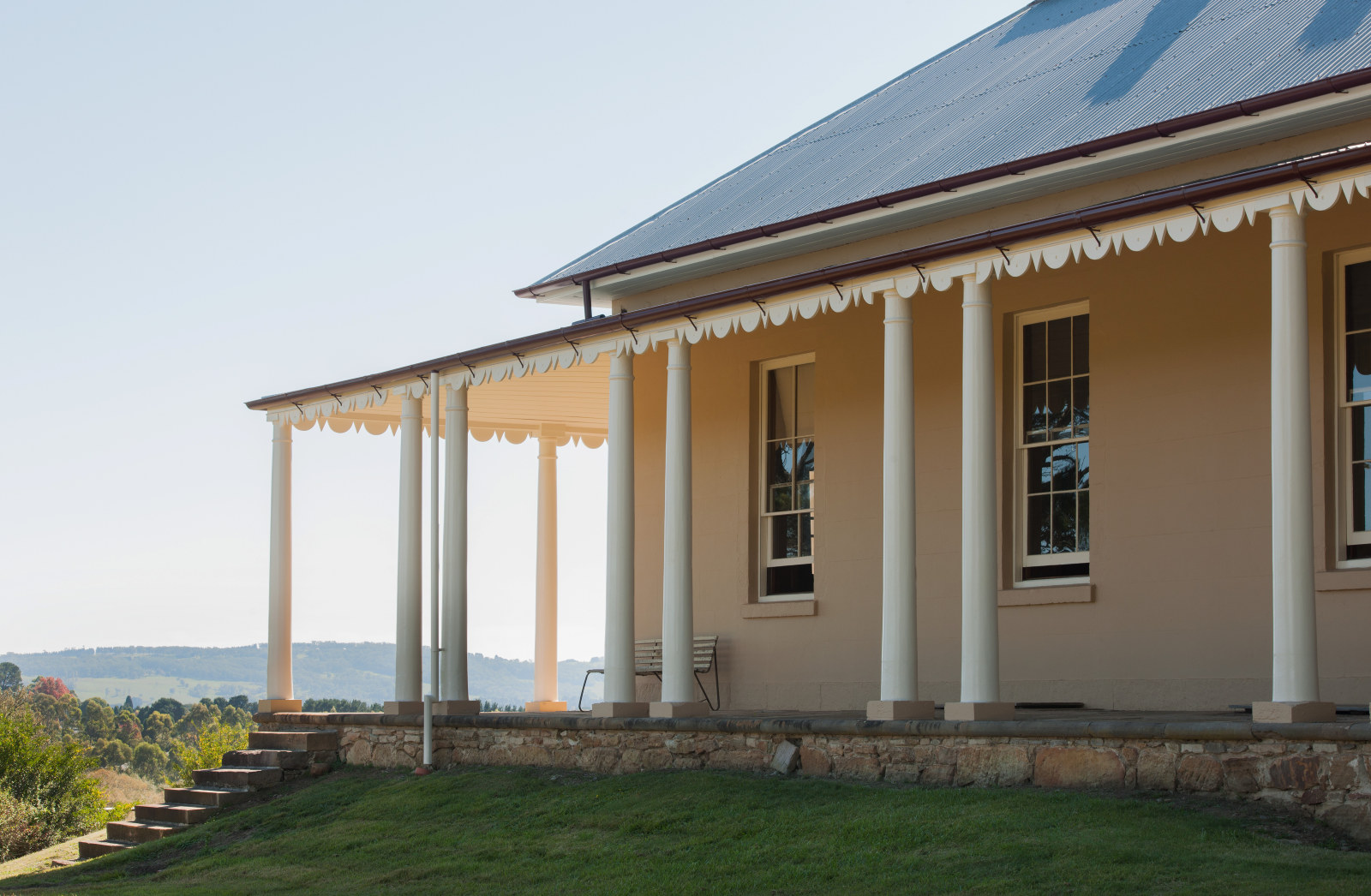Throsby Park: a place of value
What does it really mean when we say Throsby Park is of state heritage significance?
In the broadest terms, it means that Throsby Park has been judged by the NSW government to be of particular historical importance and must be kept and maintained. 'Significance' can apply to many types of things, including buildings, places, collections, individual objects and even entire towns. Items deemed to be of state significance have been studied and assessed by a variety of experts and specialists and found to have a range of qualities – things that might make it rare, unique, valuable, interesting, irreplaceable or merely worth remembering. Perhaps it’s a good example of an artist, builder's or architect’s work, or it helps illustrate important stories about the state’s history, culture and environment. Perhaps it symbolises a community's identity. Maybe beneath the ground lies important archaeological relics, or there are strange and rare things growing in the garden or grounds.
Piecing together significance
The following list breaks down Throsby Park’s heritage significance into its various parts. In other words, it explains what makes Throsby important.
- Throsby Park is of historic significance as part of the earliest land grant in the Southern Highlands and the earliest estate in the district. Many of the region’s important features, such as the township of Moss Vale, are within the original land grant boundaries.
- Throsby Park has a special and strong association with the Throsby family, who maintained a continuous presence on the property from 1819 to 2006. Of particular importance is Dr Charles Throsby, a important early figure in the colony of New South Wales and in the Southern Highlands for his role in opening-up the district. His nephew Charles Throsby (Jnr), nephew of Dr Charles Throsby who inherited his estate in 1828, is also highly significant historically. Throsby Park demonstrates the evolution of a colonial era homestead under the ownership of successive generations of one family and its changing fortunes, which are reflected in changing agricultural activities and the development of commercial mixed farming properties during the colonial era. It is amongst the earlier colonial estates in New South Wales outside the County of Cumberland.
- The cultural landscape of Throsby Park largely retains the overall form and character of a mid 1830s homestead and farm, which is increasingly rare in New South Wales, and is representative of farms from the first half of the nineteenth century in New South Wales. It is distinguished from other significant homesteads in the Southern Highlands by its largely early twentieth century garden and remnant nineteenth century orchard. Throsby Park was the earliest of the colonial estates initiating the cultural landscape of the Southern Highlands. Its importance is further enhanced by its association with the original settlement at Bong Bong. Native vegetation is an important element as it demonstrates how the landscape at Throsby Park has evolved since the 1820s.
- The cultural landscape of Throsby Park largely retains the overall form and character of a mid 1830s homestead and farm, which is increasingly rare in New South Wales
- The tenancy of the Earl of Belmore, NSW Governor between 1868 and 1872, for use as a summer retreat established the Southern Highlands a fashionable summer retreat for wealthy Sydney residents.
- Throsby Park House is a rare example of a colonial era verandahed cottage of the 1830s. At the same time it is representative of this important typology. The original plan of the house is remarkably intact and legible, and has not been obscured by later modifications. The building has retained a substantial amount of original external and internal fabric and boasts high quality timber joinery. Throsby Park House has significant landmark qualities - it is a major visual landmark within the locality and commands open vistas over the sweeping rural landscape.
- The original sections of Throsby Cottage are likely to be the oldest remaining building fabric associated with permanent residence in the Moss Vale district and may retain fabric from the circa 1820 Throsby’s Hut. These sections are representative of modest timber settler’s cottages in New South Wales from the early nineteenth century. Alterations and additions to the Cottage demonstrate adaptations to the place as the needs of the Throsby family changed during the nineteenth and twentieth centuries. Apart from this, the Cottage has historical significance as the site of the first magistrate’s court in the district.
- Throsby Park as a whole contains high potential to contain sub-surface archaeological deposits that could provide insight into the use of the property from 1820 to the present day. Extant nineteenth century buildings have potential to provide important evidence of the lives of the occupants and demonstrate earlier construction techniques and materials. Throsby Cottage in particular has potential to provide evidence of early and later periods of European occupation of the site.
- Throsby Park is of state heritage significance because it retains two remnant areas of the endangered ecological community Southern Highlands Shale Woodlands and retains mature specimens of the rare and vulnerable species, Paddy’s River box gum (Eucalyptus macarthurii). The Woodlands and scattered native trees provide increasingly rare evidence of the naturally occurring landscape in existence prior to European settlement in the area. Although modified, the remnant native vegetation demonstrates the principal characteristics of Southern Highlands Shale Woodlands and has potential to provide more information about the natural history of the property. The presence of kangaroos at Throsby Park provides a connection to pre-European and early European settlement in the Moss Vale district.
- Throsby Park continues to have strong associations for current members of the Throsby family and is important to the Southern Highlands and Moss Vale communities because of its close links to the family. Groups such as the Friends of Throsby Park and the Throsby Park Support Group provide evidence of the esteem with which Throsby Park is held by sections of the local community. It is likely that the many people who attended the Throsby Park School of Riding continue to hold the place in high esteem.
- Throsby Park is likely to have importance to the local wider Aboriginal communities due to the property’s association with Dr Charles Throsby, who enjoyed positive interaction with Aboriginal people and was also perhaps the most influential early advocate for the well-being of Aboriginal people. Throsby Park may also retain evidence of Aboriginal habitation of the area.
Published on
Related
Browse all
Background on Beulah
Beulah, on Appin Road south of Campbelltown, is a unique property that combines elements of both heritage and environmental significance

Locking up at Throsby Park
Among the set of house keys for Throsby Park are a number of very large brass mortice keys for 19th century internal door locks

Throsby Park: a comfortable residence
Discover the fascinating story of Throsby Park, a rural property near Moss Vale in the southern highlands, New South Wales, Australia, rescued, stabilised and conserved by Museums of History NSW
![Tusculum, Macleay Street, Potts Point [residence of the Long family], ca. 1886-1888](https://images.mhnsw.au/fotoweb/embed/2025/04/5588565ef3134032bf5424c329d22a62.jpg)
Tusculum
Saved from demolition in the 1980s, Tusculum represents a highpoint in Regency architectural design in Australia
